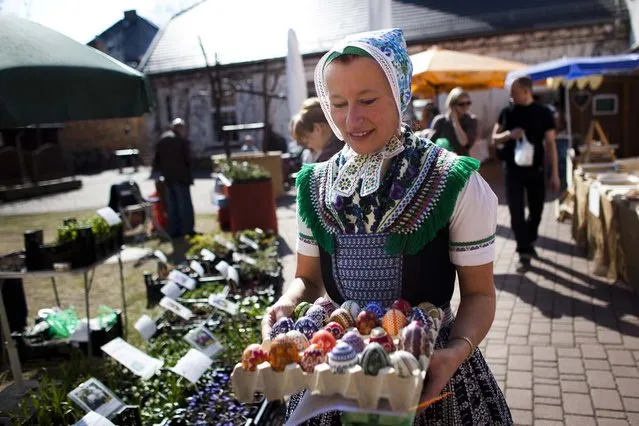
Sylvia Panoscha, wearing a traditional Lusatian sorbian folk dress, carries a box of eggs painted with traditional sobian motives at the annual traditional Sorbian Easter egg market on March 24, 2012 in Schleife, near Hoyerswerda, Germany. Easter egg painting is a strong part of Sorbian tradition and visual elements within the painting are meant to ward off evil. Sorbians are a Slavic minority in eastern Germany and many still speak Sorbian, a language closely related to Polish and Czech. (Photo by Carsten Koall)
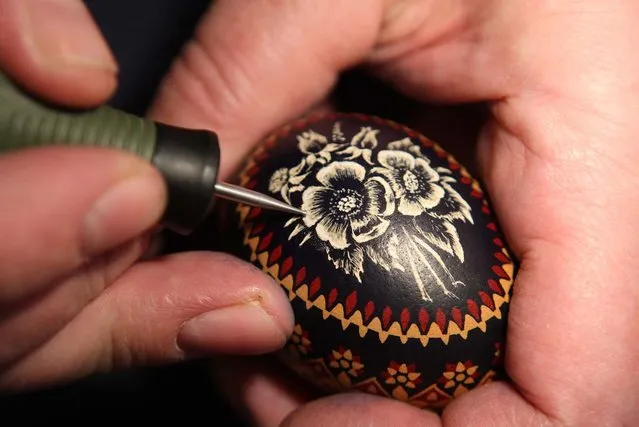
A Sorb egg painter engraves an Easter egg at the annual Easter egg market on March 16, 2013 in Schleife, Germany. Easter is a particularly important time of year for Sorbs, a Slavic minority in eastern Germany, and the period includes the tradition of painting Easter eggs that include visual elements intended to ward off evil. Many Sorbs still speak Sorbian, a language closely related to Polish and Czech. (Photo by Adam Berry)
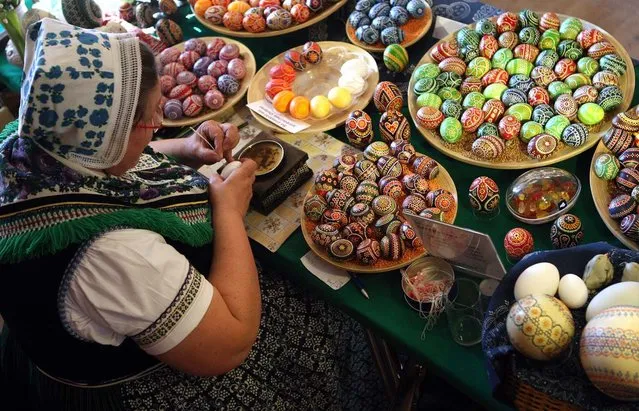
Sorb egg painter Kerstin Hanusch decorates eggs at the annual Easter egg market on March 16, 2013 in Schleife, Germany. (Photo by Adam Berry)
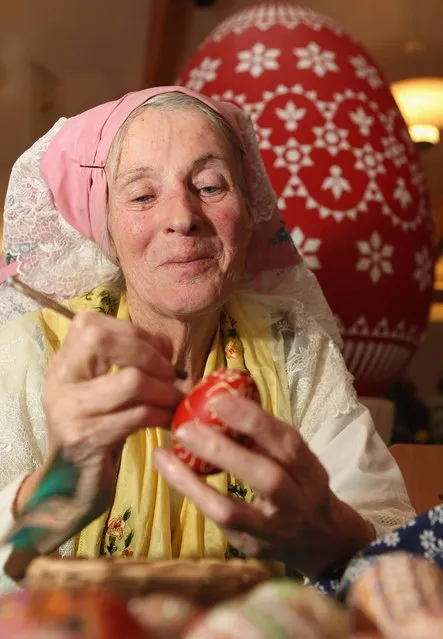
Sorb egg painter Sigrid Bolduan paints an easter egg at the annual Easter egg market on March 16, 2013 in Schleife, Germany. (Photo by Adam Berry)
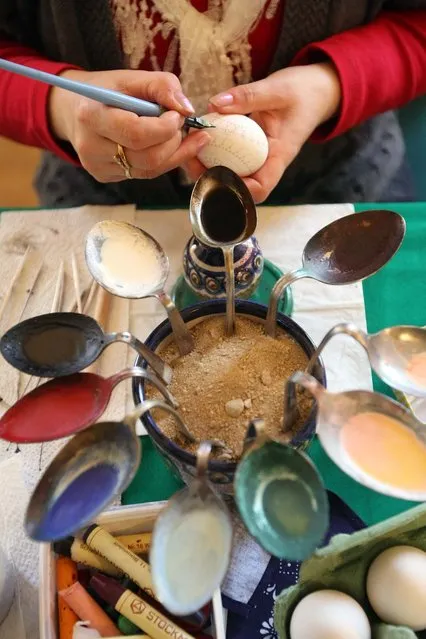
A Sorb egg painter decorates an Easter egg while using bent spoons full of melted wax as coloring at the annual Easter egg market on March 16, 2013 in Schleife, Germany. (Photo by Adam Berry)
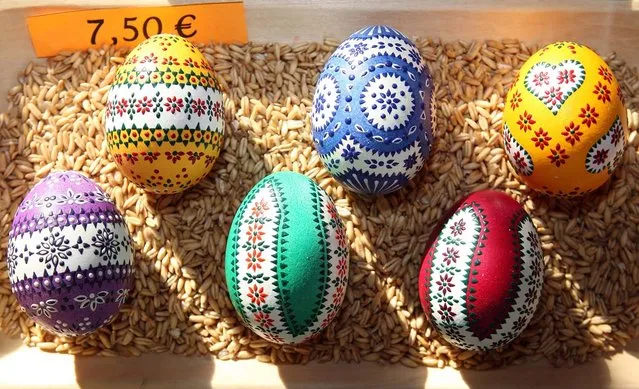
Painted Easter eggs sit on display for sale at the annual Sorbian Easter market on March 16, 2013 in Schleife, Germany. (Photo by Adam Berry)
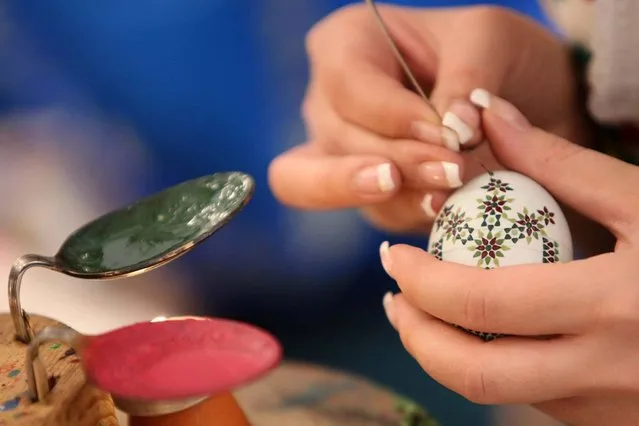
A Sorb egg painter decorates an Easter egg at the annual Easter egg market on March 16, 2013 in Schleife, Germany. (Photo by Adam Berry)
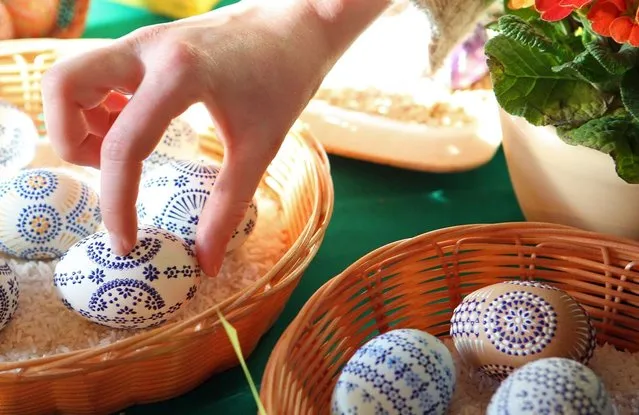
A visitor selects a decorated Easter egg at the annual Easter egg market on March 16, 2013 in Schleife, Germany. (Photo by Adam Berry)
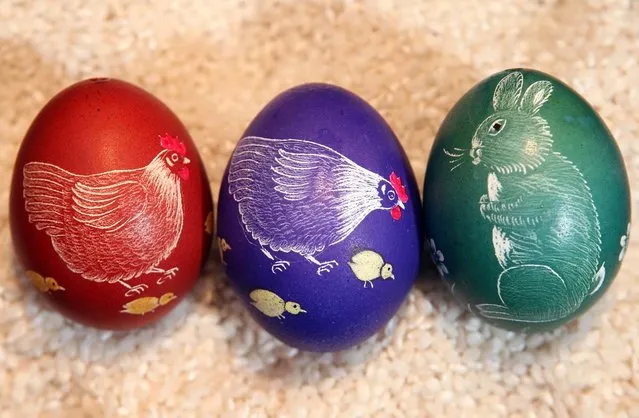
Painted Easter eggs sit on display for sale at the annual Sorbian Easter market on March 16, 2013 in Schleife, Germany. (Photo by Adam Berry)

A Sorb egg painter decorates an Easter egg at the annual Easter egg market on March 16, 2013 in Schleife, Germany. (Photo by Adam Berry)
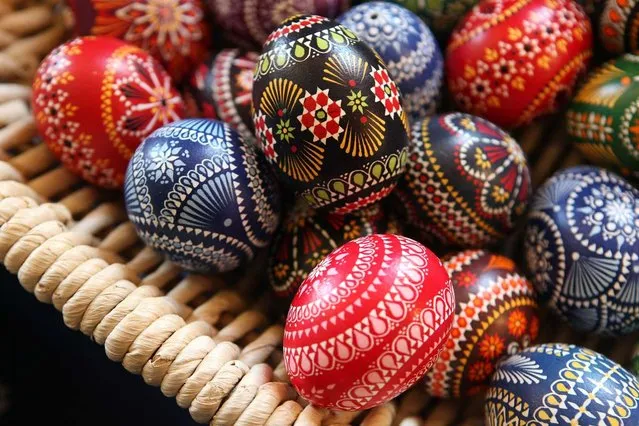
Painted Easter eggs sit on display for sale at the annual Sorbian Easter market on March 16, 2013 in Schleife, Germany. (Photo by Adam Berry)
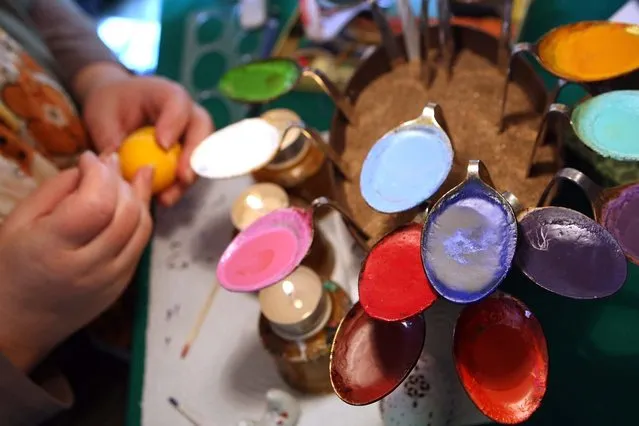
A Sorb egg painter decorates an Easter egg while using bent spoons full of melted wax as coloring at the annual Easter egg market on March 16, 2013 in Schleife, Germany. (Photo by Adam Berry)
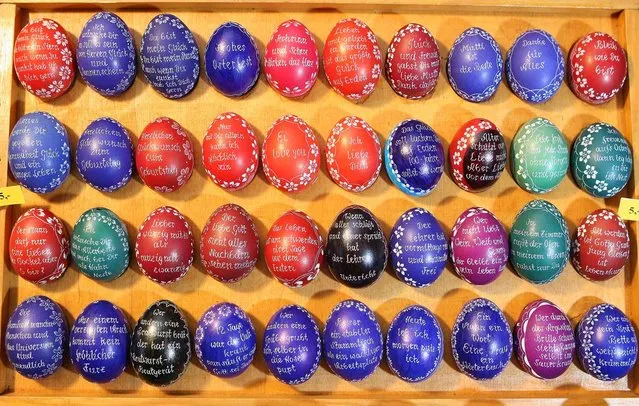
Painted Easter eggs sit on display for sale at the annual Sorbian Easter market on March 16, 2013 in Schleife, Germany. (Photo by Adam Berry)
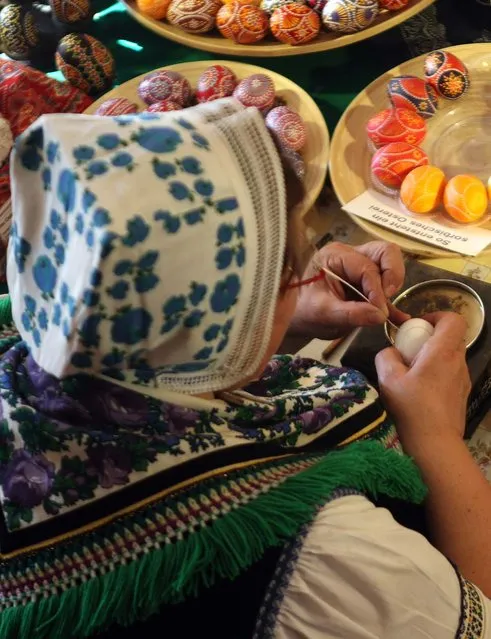
Sorb egg painter Kerstin Hanusch decorates eggs at the annual Easter egg market on March 16, 2013 in Schleife, Germany. (Photo by Adam Berry)
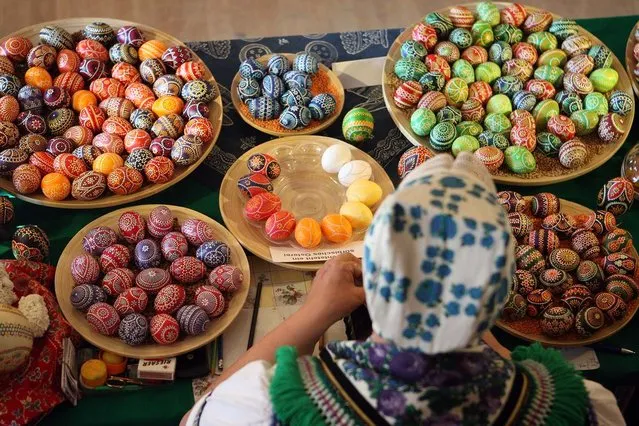
Sorb egg painter Kerstin Hanusch decorates eggs at the annual Easter egg market on March 16, 2013 in Schleife, Germany. (Photo by Adam Berry)
19 Mar 2013 06:41:00,
post received
0 comments
